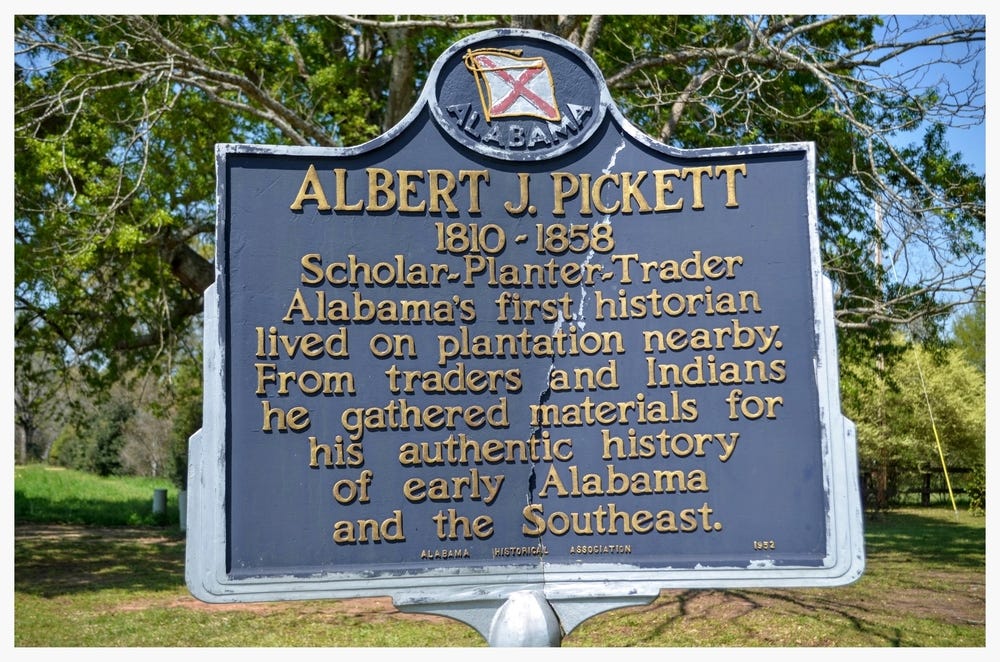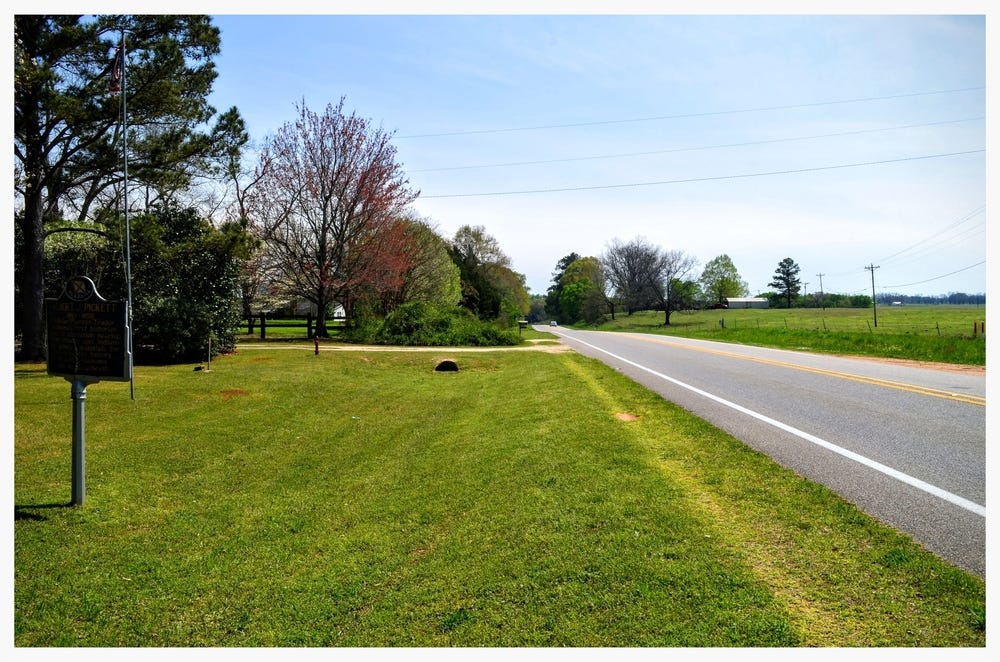Albert James Pickett
In 1814 William Raiford Pickett was a sheriff, tax collector, and state legislator in Anson County, North Carolina. He and his wife had three children, the youngest a four year old boy named Albert James Pickett. When William heard about the Treaty of Fort Jackson and all of the new Creek land available for purchase in the Mississippi Territory, he decided to take part in the land rush. In 1818 he bought a tract of land in Autauga County in the newly separated Alabama Territory, and established the Cedar Grove plantation and a trading post. He went on to be a very successful planter and served in both houses of the Alabama state legislature.
Albert was eight when his family moved to Alabama, so the second half of his childhood was spent on the frontier. He was mostly self-taught, but did spend a year each studying at private academies in Massachusetts and Virginia. His older brother, William Jr., was a successful lawyer, so in 1830 Albert decided to study law at his practice. That only lasted a few months. Albert's sister, Eliza, had married Moseley Baker, owner and founding editor of The Montgomery Advertiser, so Albert decided to try journalism next. He discovered that his passion was writing, and it would prove to be his professional focus for the rest of his life.
In 1832 Albert married Sarah Smith Harris and her father, William Harris, gave the couple a 1,100 acre plantation, Forest Farm. Albert took to the life of a planter, and quickly became one of the first planters in the region to use science to inform his decisions on the plantation. He even contributed articles to several scientific journals, including The Southern Cultivator, but his principle written legacy came in the field of history.
Albert spent his adult life researching and collecting first-hand accounts of the early settlement of the southern United States. He also helped to found the Alabama Historical Society. In 1851 he published his principal work, History of Alabama, and Incidentally Georgia and Mississippi, From the Earliest Period. It covers the history of what is now the state of Alabama from Hernando de Soto's 1538 expedition until Alabama achieved statehood in 1819, and is still the essential starting point for people interested in Alabama's early years.
In 1858 Albert bought a house in Montgomery, which you can read about here, where he hoped to continue working on his comprehensive history of the southern United States. Unfortunately, he died before he could move into the house or complete his next work. He is buried in Greenwood Cemetery in Montgomery, and is remembered today as Alabama's first historian.



